Almond trees produce almonds that are used in a wide variety of products. You may wonder if you can grow an almond tree from an almond seed. We're curious, too, so we've done our research on this to learn more and share the answers with you.
You can grow an almond tree from almond nuts, but the nuts must be fresh, unsalted, and unroasted for the seed to germinate. Although you can develop an almond tree from the almond nut, there are many things to consider for it to grow and bear fruit.
An almond tree will require some time to grow. We'll provide you with all the information you need to know to raise an almond tree. Continue reading to learn more.
Can You Grow An Almond Tree From An Almond?
Yes, you can grow an almond tree from almonds. Trees bear fruits, and fruits have seeds. Almond nuts can be used to grow an almond tree, but the nuts must be raw, pure, and untreated.
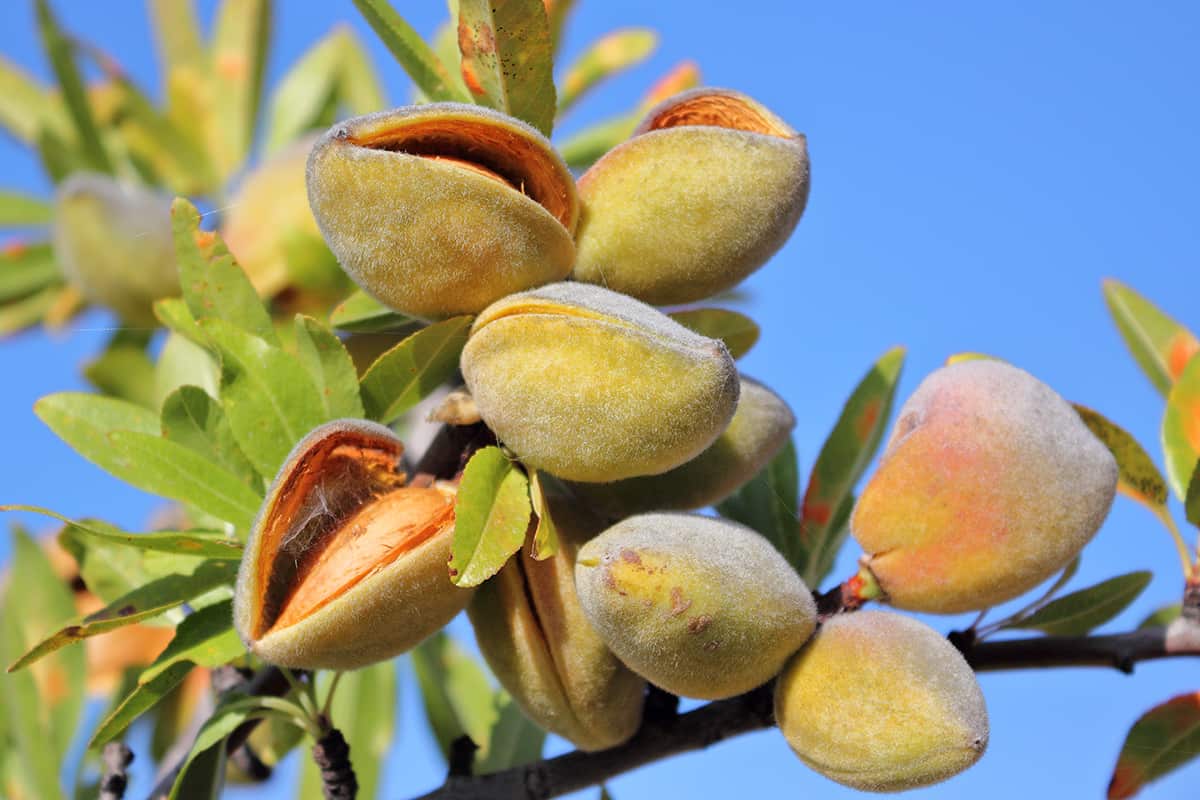
You can grow two kinds of almond seeds: sweet and bitter. Sweet almonds are edible, while bitter almonds are cultivated for their flowers and used as ornamentals or flavorings, such as almond extract, and are sometimes used in cosmetics.
There is a wide variety of sweet almond cultivars to choose from if you intend to consume the nuts from your almond tree, such as "All-In-One," "Caramel," "Mission," and "Hall's Hardy."
It is essential to understand that almonds generally do not self-pollinate. A different and compatible fruit-bearing variety of tree (such as peaches) is usually required so the pollen can travel or cross-pollinate. "All-in-one" is a variety of sweet almond cultivars that can self-pollinate.
Is An Almond A Fruit Or A Nut?

Almond trees do not bear nuts but stone fruits known as drupes. Drupes are fruits with an outer hull and hard shell that houses the seeds. The only edible part of the almond tree's fruit is the seed, which is the almond itself.
Nuts are, in fact, fruits. They are dried single-seeded fruits. In botanical terms, a true "nut" is a type of dry fruit that consists of a hard shell covering a single seed.
Did you know that even peanuts are not considered nuts? Aside from almonds and peanuts not being actual nuts, cashews and pistachios are also considered non-nuts and are classified as drupes, except peanuts, as it is classified as legumes. Only hazelnuts, chestnuts, pecans, and walnuts fit and qualify as actual nuts.
In What Climate Do Almond Trees Grow Best?
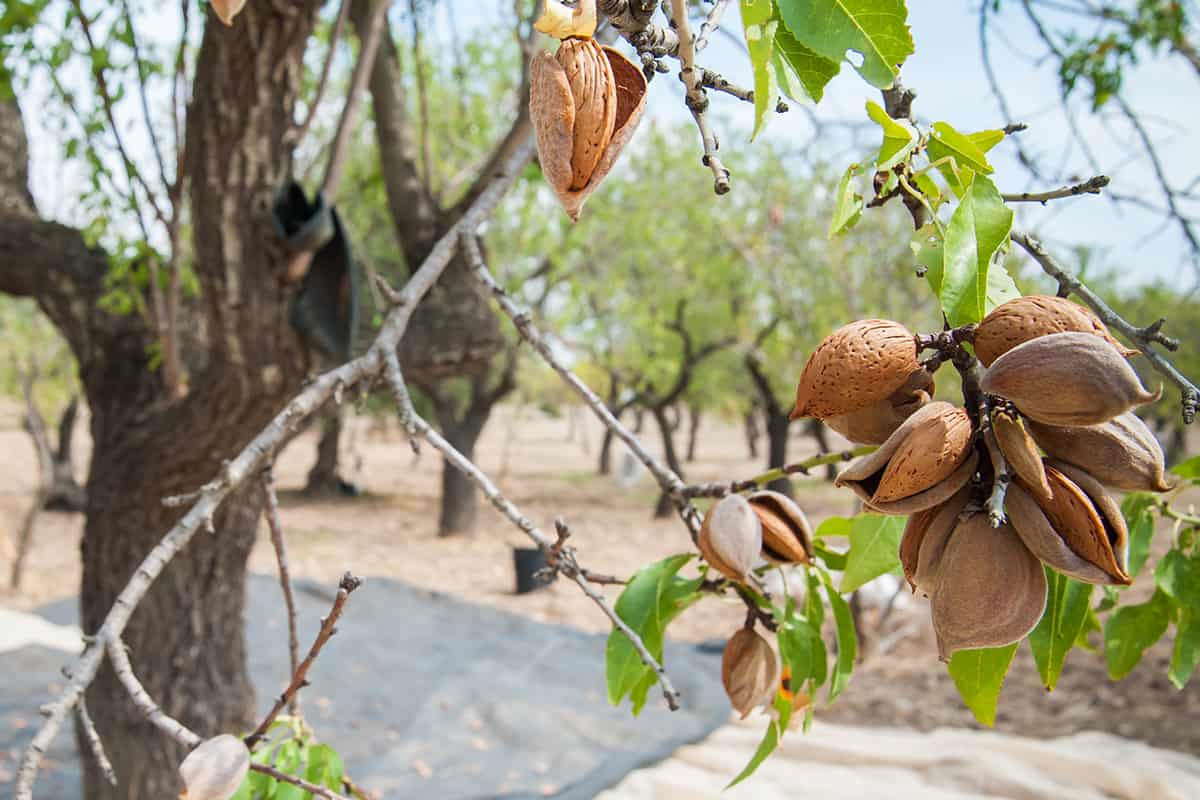
There is a reason why almond trees are cultivated mainly in California. Growing almonds requires a dry, warm, hot sunny climate with occasional rain and higher temperatures in the winter, making California one of the best places to grow them.
Make sure to plant your almond tree in a sunny area if you want to grow one at home. Almond trees can be cultivated indoors. Check out this article titled, Can Almond Trees Grow Indoors [And How To]? (Quick Guide For Beginners)
How To Grow An Almond Tree From Almond Seed
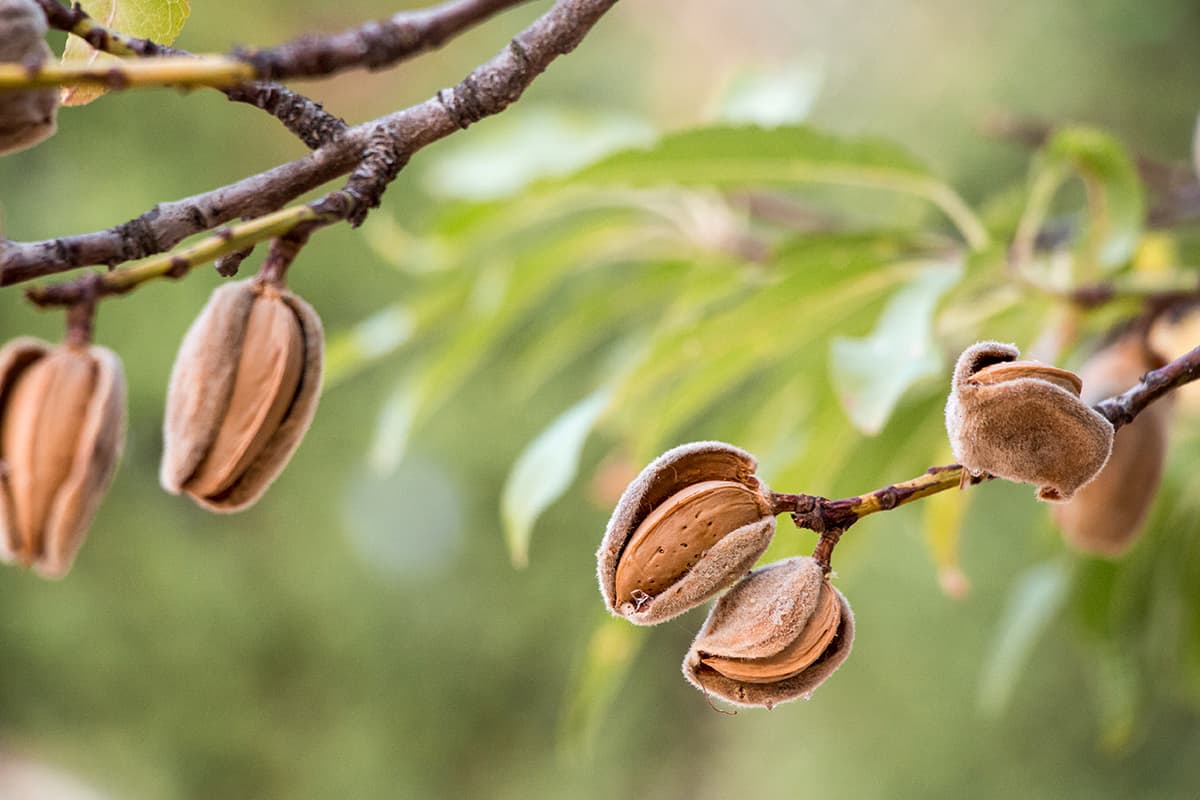
Growing a tree is not easy. It requires a lot of effort and a whole lot of patience. There are factors to consider and to know when cultivating an almond tree.
Below are the steps to grow an almond tree from an almond seed.
Step 1: Germinate seeds
Choose at least ten raw, unpasteurized almond seeds. Some seeds will germinate, and only a slim percentage will grow into a seedling or young tree.
To germinate the seeds, begin by soaking the almonds in water for 48 to 72 hours. After that, gently peel the skin off from the tip. This will aid in the formation of the roots, but it is not required.
Step 2: Stratify seeds
The next step is stratification. This process will speed up germination by deceiving the almond seeds into thinking that winter has passed. Place them on tissue paper and add another one as a cover. Sprinkle some water and place it inside a plastic container with a lid. Place inside the fridge for at least 3 to 4 weeks.
Step 3: Choosing the suitable soil
The almond tree grows well in a wide range of soil types, from sandy to clay, but prefers light, fertile, rich, well-drained loam soils. We can start off using potting soil or coco peat for the sapling.
Click here to see this potting soil on Amazon.
Step 4: Planting the seeds
In 3 to 4 weeks, the seed will have a root. Make sure your pot is ready and that it has a drainage hole. After that, you can plant your almond seeds in potting soil.
Fill your planter with potting soil and gently place the root of the almond seed first, then cover it with soil. Spray some water to keep the soil moist. Place it near a window or area where it can receive a good amount of sunlight.
Step 5: Transplanting
The almond sapling will appear in about 4 to 5 days. After 7 days, transfer the sapling into a bigger pot of at least 6 inches to ensure the roots have enough space to grow. After the transfer is complete, water your plant.
Almond trees need a large area to grow. If you have ample space, dig a hole and plant it in your yard. However, it will require another fruit-bearing tree to cross-pollinate unless you are growing an "All-in-one" variety of sweet almonds that self-pollinate.
Step 6: Patience
The last step is waiting and having a lot of patience. It will take at least 5-12 years for an almond tree to fully mature, and it only has a life span of about 25 years.
How To Take Care Of Your Almond Tree
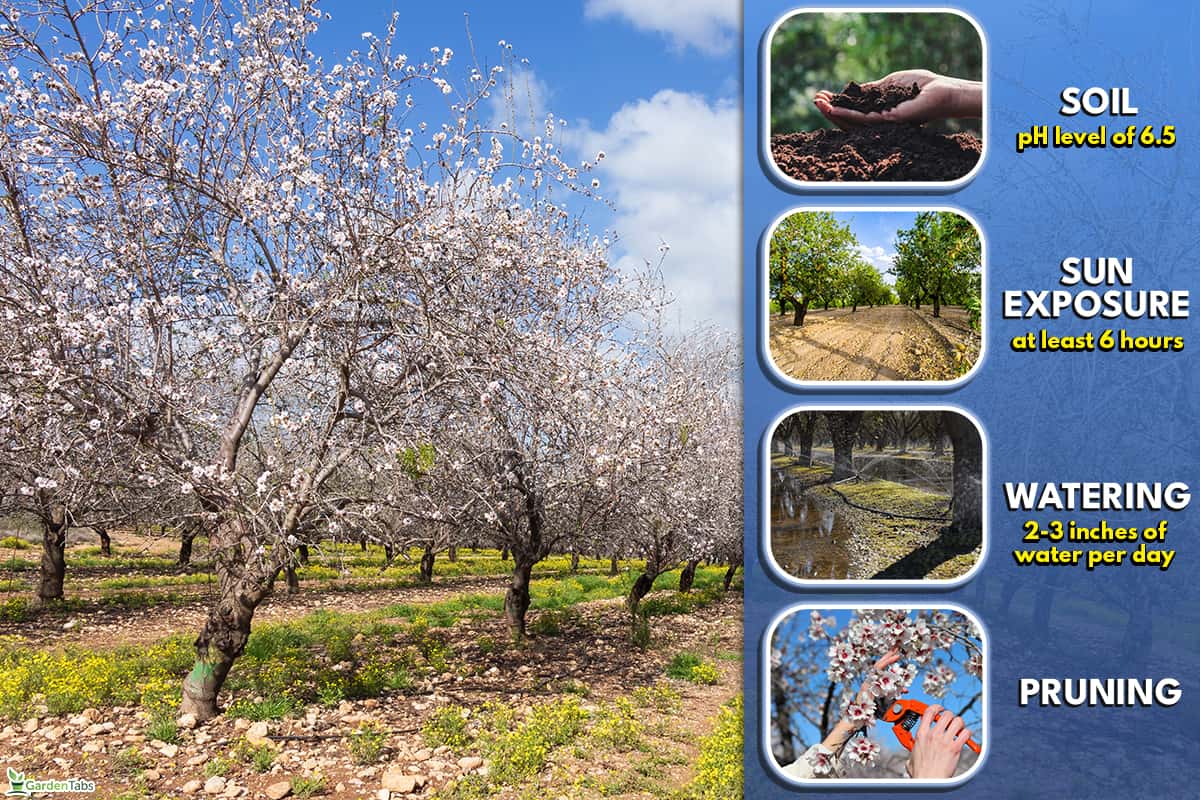
You must take care of your almond tree to thrive and bear fruit. Here are some things you need to know about taking care of your almond tree.
Soil
Almond trees will thrive best in well-drained, fertile, loamy soil with a pH level of 6.5. Crop nutrition has an impact on nut quality as well. Phosphorus, magnesium, and sulfur are essential nutrients that must be present in the soil.
It is also essential to know that almond trees are highly susceptible to soil-borne diseases such as verticillium wilt. Better prune the affected area, dispose immediately, and avoid planting crops in the affected soil, as it can last for years.
Sun Exposure
Almond trees prefer sunny, hot, and drier climates. The more sunlight they receive, the better. Like any other plant, almond trees require at least 6 hours of sunlight exposure.
Watering
Young trees require 2-3 inches of water per day, while mature trees require the same amount once a week. Additionally, it needs to receive more than is recommended during the summer and fall. Be consistent with watering to avoid drowning the roots.
Pruning
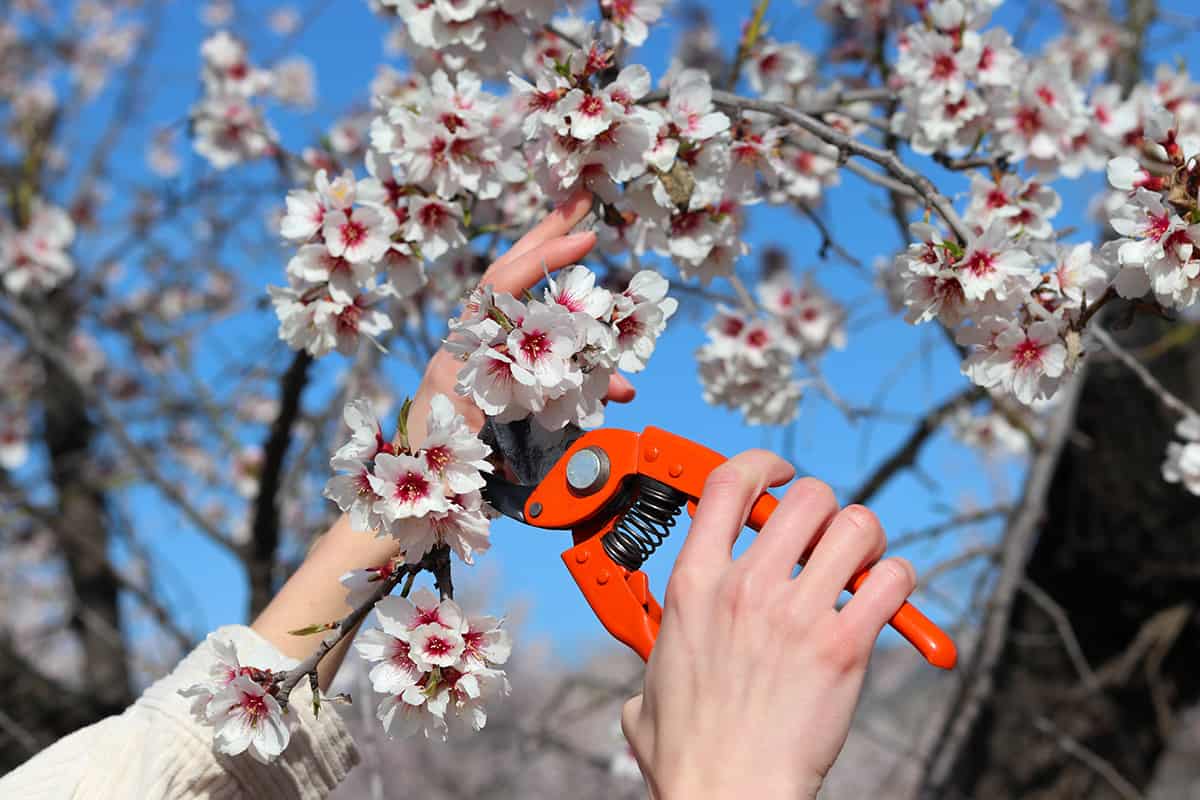
Maintaining the health and productivity of your almond tree requires regular pruning. Every year, during the tree's dormant period in late winter, prune no less than 3 to 5 branches. Additionally, you should prune low-hanging, dead, or dying branches at any time of year, not just in the winter.
Wrapping things up
It is possible to grow an almond tree from an almond. Growing a tree requires a lot of effort, time, and energy. There are also things to consider, such as the location, climate, and soil condition.
Cultivating a tree also requires intensive care. Pests and soil diseases are inevitable, so it is best to conduct a check-up once in a while. Your tree will produce good fruit in the future if it receives the proper care and nutrition it needs.
If you enjoyed reading this article, check out these other related posts below!
Can Almond Trees Grow Indoors [And How To]? (Quick Guide For Beginners)


I have planted last year an almond from a tree we have in the garden which started dropping and grew it in a pot in the terraza. This year it started shooting up (I repotted it) and is now 50cm in hight with lots of soft branches. I will be putting a net around it to stop it from leaning but don’t know if I trimming the soft branches will help them to strengthen or damage it. Any help would be gratefully appreciated. thank you beforehand.